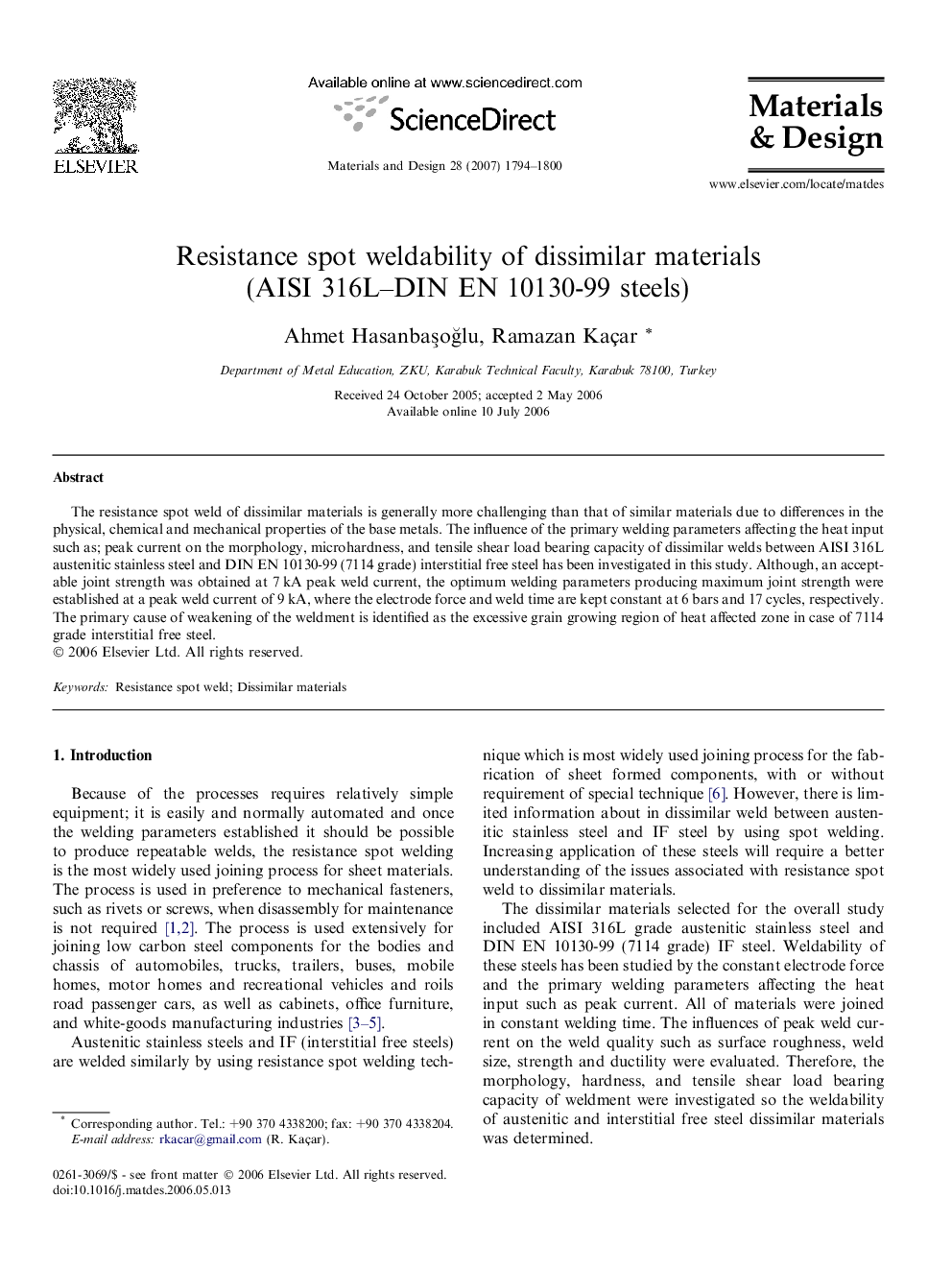| Article ID | Journal | Published Year | Pages | File Type |
|---|---|---|---|---|
| 833618 | Materials & Design (1980-2015) | 2007 | 7 Pages |
The resistance spot weld of dissimilar materials is generally more challenging than that of similar materials due to differences in the physical, chemical and mechanical properties of the base metals. The influence of the primary welding parameters affecting the heat input such as; peak current on the morphology, microhardness, and tensile shear load bearing capacity of dissimilar welds between AISI 316L austenitic stainless steel and DIN EN 10130-99 (7114 grade) interstitial free steel has been investigated in this study. Although, an acceptable joint strength was obtained at 7 kA peak weld current, the optimum welding parameters producing maximum joint strength were established at a peak weld current of 9 kA, where the electrode force and weld time are kept constant at 6 bars and 17 cycles, respectively. The primary cause of weakening of the weldment is identified as the excessive grain growing region of heat affected zone in case of 7114 grade interstitial free steel.
